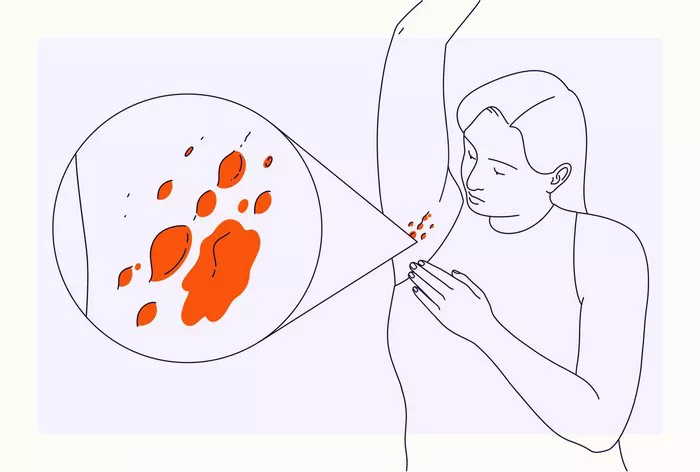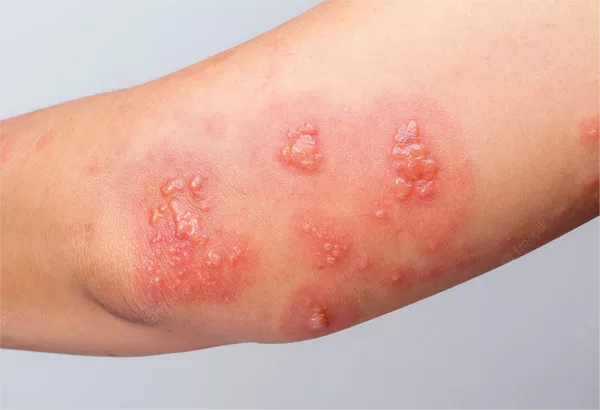Hidradenitis suppurativa (HS) is a chronic skin condition characterized by painful, recurrent nodules and abscesses, typically affecting areas rich in apocrine glands such as the axillae, groin, and buttocks. This debilitating disease can severely impact patients’ quality of life due to discomfort, pain, and emotional distress. While HS has no definitive cure, various treatment approaches aim to manage symptoms and reduce flare-ups. Among these approaches, exfoliation has emerged as a topic of interest in the skincare routines of individuals with HS. This article delves into the potential benefits and considerations of exfoliation in the context of HS management.
What is Exfoliation?
Exfoliation is the process of removing dead skin cells from the surface of the skin. This can be achieved through mechanical means (like scrubs or brushes) or chemical agents (such as alpha hydroxy acids or beta hydroxy acids). The primary goal of exfoliation is to promote skin cell turnover, revealing newer, healthier skin underneath. For individuals with HS, this practice raises questions about its impact on the condition’s progression and symptoms.
The Pathophysiology of Hidradenitis Suppurativa
To understand the potential role of exfoliation in HS management, it’s crucial to first grasp the underlying pathophysiology of the disease. HS is believed to involve inflammation around hair follicles, leading to the formation of abscesses, sinus tracts, and scarring. Factors such as genetics, hormonal influences, and immune dysregulation likely contribute to the development and progression of HS.
The inflammatory nature of HS suggests a need for gentle skincare practices that avoid exacerbating skin irritation or trauma. Therefore, the question arises: Does exfoliation benefit or harm individuals with HS?
The Potential Benefits of Exfoliation in HS
Reduced Follicular Plugging: One proposed benefit of exfoliation in HS is the prevention of follicular plugging. By removing dead skin cells and debris from the skin’s surface, exfoliation may help reduce the occlusion of hair follicles—a hallmark feature of HS.
1. Enhanced Absorption of Topical Treatments: Exfoliation can improve the penetration and efficacy of topical medications commonly used in HS management, such as antibiotics or anti-inflammatory agents. By creating a smoother skin surface, exfoliation may facilitate better absorption of these treatments into affected areas.
2. Promotion of Skin Renewal: HS can lead to thickened, scarred skin in affected regions. Regular exfoliation might promote skin cell turnover and potentially mitigate the development of scar tissue, although caution is advised to prevent excessive irritation.
Types of Exfoliation Methods for HS
When considering exfoliation for HS, it’s essential to choose gentle methods that minimize trauma to sensitive skin. Here are some approaches that may be suitable:
1. Chemical Exfoliants: AHAs (alpha hydroxy acids) and BHAs (beta hydroxy acids) are mild chemical exfoliants that can help dissolve dead skin cells. They are generally gentler than physical scrubs, making them potentially suitable for individuals with HS.
2. Enzymatic Exfoliants: Enzyme-based exfoliants use natural enzymes (like papain from papaya or bromelain from pineapple) to dissolve dead skin cells. These can be less abrasive compared to mechanical scrubs.
3. Soft Brushes or Cloths: Soft-bristled brushes or gentle washcloths can be used to physically remove dead skin cells without causing excessive irritation.
Considerations and Precautions
While exfoliation holds promise as a supportive measure in HS management, several considerations must be kept in mind:
1. Gentleness is Key: Individuals with HS should avoid harsh exfoliation methods that could exacerbate inflammation or cause skin trauma.
2. Patch Testing: Before incorporating new exfoliants into their routine, patients should perform patch tests to assess skin tolerance and potential adverse reactions.
3. Consultation with Dermatologist: It is essential for individuals with HS to consult with a dermatologist before starting any new skincare regimen. Dermatologists can provide personalized recommendations based on the severity and specific needs of each patient.
Conclusion
In conclusion, exfoliation may play a supportive role in managing hidradenitis suppurativa by promoting skin cell turnover, reducing follicular plugging, and enhancing the efficacy of topical treatments. However, caution must be exercised to avoid exacerbating skin inflammation or causing trauma. Patients should always seek guidance from healthcare professionals before incorporating exfoliation into their skincare routine. Further research is needed to establish clear guidelines on the optimal use of exfoliation in the context of HS management.
Related Topics:

























